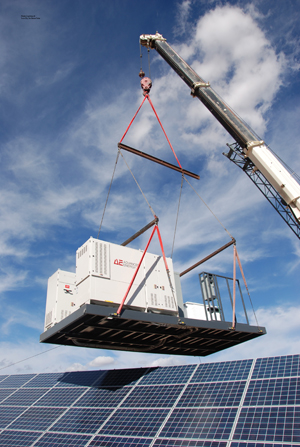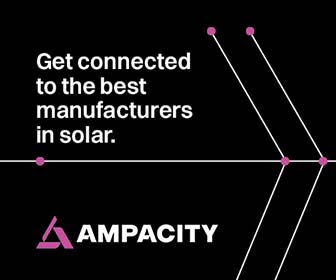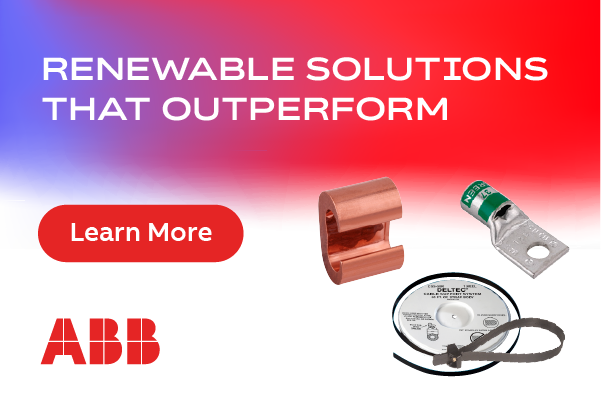Symbiotic Solar on the Electrical Grid: Through advanced, configurable inverter functions
 Solar energy is gaining increased recognition as a tool to reduce our carbon footprint and achieve energy independence. Precipitated by a continuous drop in module prices and Balance of System (BoS) costs, the US solar industry as a whole saw unprecedented photovoltaic (PV) growth in 2011 and 2012. However, solar power still makes up only about one percent of energy generation in the United States. New challenges will undoubtedly arise as this percentage is expected to rise. Though manageable, in order to maintain the growth and the success of the industry, ongoing research, testing, and innovation will be required.
Solar energy is gaining increased recognition as a tool to reduce our carbon footprint and achieve energy independence. Precipitated by a continuous drop in module prices and Balance of System (BoS) costs, the US solar industry as a whole saw unprecedented photovoltaic (PV) growth in 2011 and 2012. However, solar power still makes up only about one percent of energy generation in the United States. New challenges will undoubtedly arise as this percentage is expected to rise. Though manageable, in order to maintain the growth and the success of the industry, ongoing research, testing, and innovation will be required.
One of these challenges comes from the intermittent nature of solar power when compared to traditional energy resources. Resulting grid variations and subsequent impacts on existing voltage regulation equipment are a concern, particularly under high-penetration scenarios. Too much power means local voltage and its respective frequency can rise, causing problems for motors, lights, and a host of other electronics. Conversely, a lack of power and voltage means frequency can dip. This problem is not specific to solar. However, other energy sources tend to be more controlled and predictable, since they aren’t dependent on the weather and the sun shining.
Additional challenges stem from the design of existing infrastructure, its protective control features, and electromechanical equipment settings. Traditionally, electrical infrastructure was built to deliver electricity from a central generation station out to customer loads. With the increase in distributed generation PV projects, rooftops, carports, brownfields, and other areas are now becoming sources of electrical power, distributed throughout the grid. This is resulting in a demand to re-haul operation and control practices by the local utilities.
Although such challenges can take a variety of forms—depending on a project’s geographical location, the utility control practices, local loading (circuit loading), and seasonal load and generation variations—advancements in configurable inverter functions can help. Configurable inverters provide a deterministic response at the point of interconnect, based on the holistic electrical system needs.
Advancing technologies
Widely recognized as the respective hub of a PV system, inverters need a high level of user configurability to satisfy the needs of local engineering procurement construction services (EPC), customers, and utilities. There are a number of technologies that have been developed to address the challenges of widespread PV integration into existing electrical distribution circuits, including:
1. Local scheduling capability;
2. Voltage support functionality;
3. Closed loop point-of-interconnect control;
4. Phasor Measurement Unit (PMU)-based island detection.
These functions have been demonstrated and investigated under the Department of Energy’s (DOE) Solar Energy Grid Integration Systems Advanced Concepts (SEGIS-AC) program. This program leverages a systems’ based approach to alleviate the voltage concerns caused by solar power’s sporadic nature, looking beyond the point-of-interconnect to address feeder wide power quality and voltage stability concerns. As a result, the program is improving inter- and intra-operation of geographically distributed resources.
As power electronic-based devices, inverters are in a specific position to manage many of the voltage and frequency issues expected to increase, as solar power becomes a larger percentage of the energy demands on distribution circuits. Reliability is key: the coordination and aggregation of these capabilities allows for system operators to maintain reliable, efficient control, even under widely varying intermittency events that can sometimes be caused by PV systems.
Efficiency improvements of the overall electrical system are possible since real and reactive power can be generated close to point loads, which in turn decreases the losses typical of longer distance power transmission. With power electronic-based devices, the ratio of real and reactive power can be controlled in a linear fashion, eliminating the step changes in voltage often associated with today’s electromechanical voltage regulation equipment—and resulting in a smoother, voltage profile at a customer’s load points.
For the issues associated with distributed generation, the SEGIS-AC program is tapping wide-area information to better utilize PV resources that are spread across electrical and geographic areas. This system state information, combined with the advanced inverter control functionality, allows for optimization of PV resource performance at and above the distribution feeder level. This allows for virtual power plants to be optimized for the appropriate individual circuit needs, even if the PV resources are spread over a geographically wide service territory.
All these factors allow for more efficient operation of the electrical distribution circuits, enabling tighter control bounds and increased capacity for the sub-transmission and transmission systems.
Seamless operations
With advanced intelligence through wide area information, the inverter and PV system can better integrate with the legacy electromechanical voltage regulation equipment, resulting in extended life, improved customer voltage profiles, and lower system losses. With increased awareness and visibility throughout the electrical distribution network, and quicker reaction capabilities, these advanced inverters are enabling vastly larger PV penetration rates on today’s electrical systems, without major overhauls of electrical circuits (and the associated cost implications).
PV growth is a crucial step in lessening our need for traditional fossil fuel sources, and lowering our collective impact on the environment. Through advanced inverter and system control features, aggregation across service territories (virtual power plants), and deterministic response (priority driven schedulable control), the solar industry continues to lead the way in developing technologies that have resulted in improvements to power quality, voltage stability, and overall system efficiency throughout electrical distribution systems.
Michael Mills-Price is SEGIS program manager and technical lead for the Solar Energy business unit at Advanced Energy Industries. He’s one of the principle designers responsible for bringing the TX product line to market.
AE Solar Energy
www.advanced-energy.com/solarenergy
Author: Michael Mills-Price
Volume: March/April 2013








.png?r=8858)



